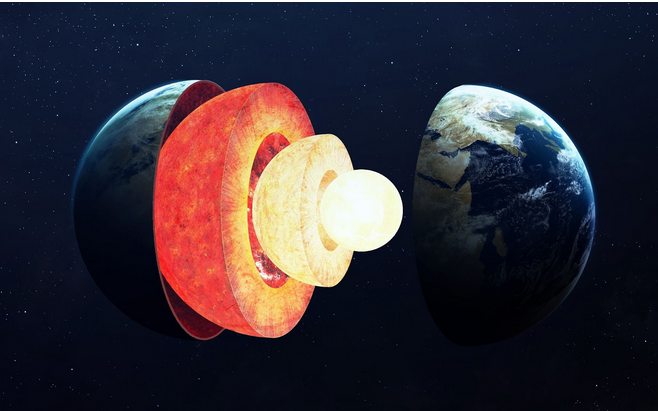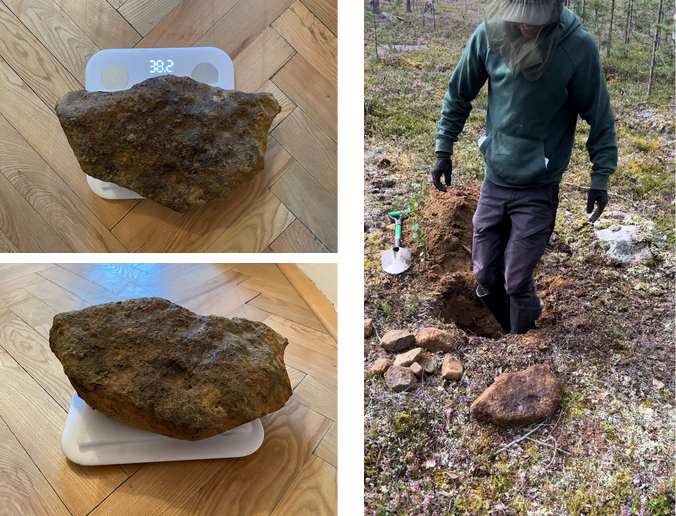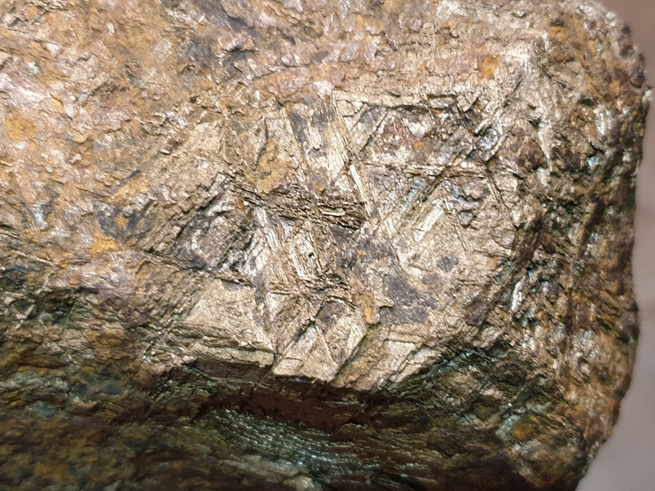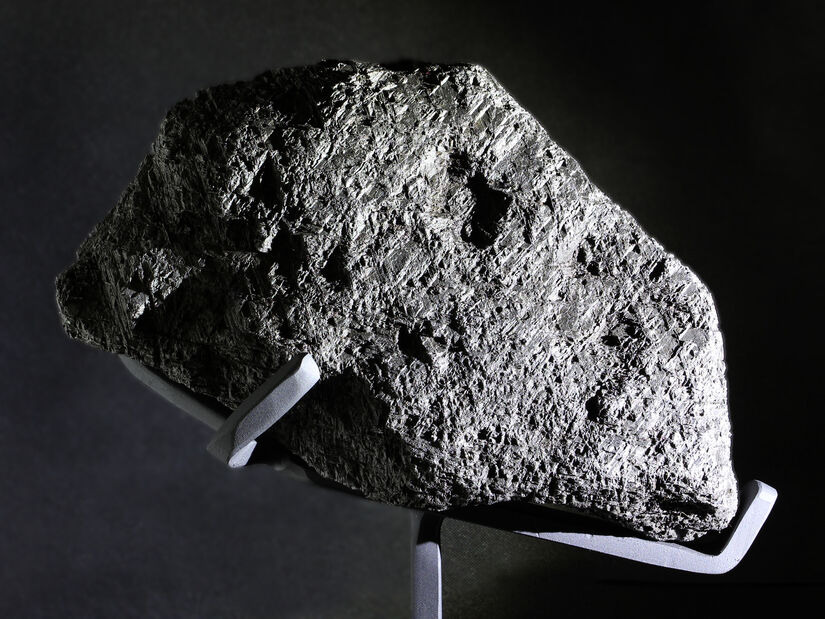Want to invest in a meteorite but don't have hundreds of thousands for a really big and rare piece?
Never mind!
Now you have a unique opportunity to buy a share through the investment company Portu and their Portu Gallery project. Thanks to them you can own a share in the beautiful and quite exceptional meteorite Muonionalusta, which was found by a Czech prospector on 24.7.2023!
More about the investment HERE.
And below detailed information about the meteorite itself.
The origin of the meteorite
A surprisingly large number of meteorites have been preserved on our planet. Some have fallen when mankind did not yet exist, other falls have been filmed and shared on social media. Just as little is known that meteorites vary greatly from one another. Some bear witness to the birth of the solar system and are clumps of dust and rocks, others come from larger bodies and boast a much more tumultuous resume.
Our iron meteorite Muonionalusta is one of these, once part of the core of an ancient asteroid that has now disappeared. And for a larger mass of iron to form in space, there must be what is known as differentiation of the planet or asteroid. Differentiation is nothing more than the separation of molten material into heavier elements, which are pulled by gravity into its centre, and lighter elements, which remain on the surface. The very same process created the iron core of our planet and the solid crust we walk on.

An ancient collision
But the planet from which our 36-kilogram meteorite Muonionalusta came was not as lucky as our Earth. It didn't grow to that size and one unlucky day collided with another giant celestial body. The result was a devastating catastrophe that would make Bruce Willis pale in fear. So powerful was the impact that the very core of the asteroid was torn apart and one of the glowing fragments took a long journey through cold space, cooling again and forming the translucent structure we can admire together today.
We don't know how long it orbited the Sun, but we do know that it went on a collision course with our mother Earth about 800,000 to one million years ago. It's a pity there was no one around to film its arrival, because it must have been an extraordinary spectacle. The meteorite probably weighed tens of tonnes when it entered the atmosphere and the audiovisual accompaniment to its arrival must have been breathtaking. The enormous ball of fire illuminated the sun many times over and the thunder could be heard for hundreds of kilometres as the meteor broke into countless pieces that sent the frozen north of Sweden reeling.
Lucky find
Then the meteorite came down. Literally. Gradually, vegetation covered the fragments and eventually the ground. That's why the first record of the discovery dates back to 1906. It came from the village of Kitkiöjärvi in Sweden, above the Arctic Circle, but since then many discoveries have been made in an area of almost 150 km2. One of the largest pieces found was a 950 kg meteorite, which is on display at the Stefanik Museum in Prague and is the largest meteorite in the Czech Republic and one of the largest meteorites in Europe.
Gradually, however, numerous expeditions beyond the Arctic Circle began to return empty-handed, and today the discovery of a larger piece is a great rarity. That is why in July 2023, the more than 38-kilogram find by Czech meteorite hunter Peter Lee caused a small stir in the meteorite collecting community. Today, finds of such large pieces are a real rarity.

Characteristics of the meteorite
After the purchase of the meteorite, the process of cleaning and preservation began. The meteorite may have survived in the ground for almost a million years, but once air reaches it again after this time, it can start corrosion processes. This alien visitor, which has survived the destruction of its parent asteroid and a space voyage of billions of kilometres, could crumble to dust within decades.
So the meteorite was stripped of all rust using special technologies and an extremely laborious mechanical cleaning process lasting over a month, until its unique iron crystalline structure began to emerge and thus its unquestionable extraterrestrial origin.

Eventually the meteorite was treated so that the rust would not return and it was preserved in this state for ages to come.
The Muonionalusta meteorite is an octahedrite-type iron meteorite with a high content (over 8%) of nickel. This is further evidence of extraterrestrial origin, as such a proportion of nickel is not found in terrestrial iron. As is Stishovit, which is an extremely hard and dense form of silica. The most striking feature of its cosmic origin, however, is its lattice-like structure, which can only be formed during the extremely slow (thousands and thousands of years) solidification in a vacuum

Investment opportunity
The value of a meteorite is determined by many signs. The basic clue is its rarity. According to current statistics, just under 6% of observed falls are iron meteorites. The fact that iron meteorites attract attention more easily means that their proportion among the meteorites found is higher than this 6%, but the exact figure is not known. In any case, the International Meteorite Database (www.lpi.usra.edu) lists only 90 iron meteorites of this type (IVA).
Another important factor is appearance and quality. Meteorites are often compared to works of art, and in this respect this meteorite is a world-class piece.
However, we consider the most valuable aspect of this piece to be its story. The vast majority of meteorites on the world market are anonymous pieces, often fragments or offcuts of larger pieces that have passed through dozens of hands. This meteorite, now weighing 36 kg, is the entire piece as it fell a million years ago, and its family tree is clearly described. It was purchased from a Czech finder by Milan Zvára and Zdeněk Schneider, representing the Alien Rocks brand, who arranged for its identification, cleaning, preservation and the manufacture of a customized stand.
Thanks to Portu Gallery, you can now become a co-owner of something ethereal. What was first hidden in the core of an ancient asteroid can now be admired together and enjoyed together as the value of this meteorite continues to grow. For it is certain that no more Muonionalusta will fall from the sky. And the "reserves" of this famous meteorite that the inhospitable landscape of northern Sweden has been yielding for the last 100 years seem to be completely exhausted.
Data and specifications
Name: Muonionalusta
Type: iron meteorite
Weight: 36 kg
Composition: 91% iron, 8.4% nickel and rare elements such as gallium, germanium and iridium
Date of discovery: 24 July 2023
Place of discovery: Sweden

